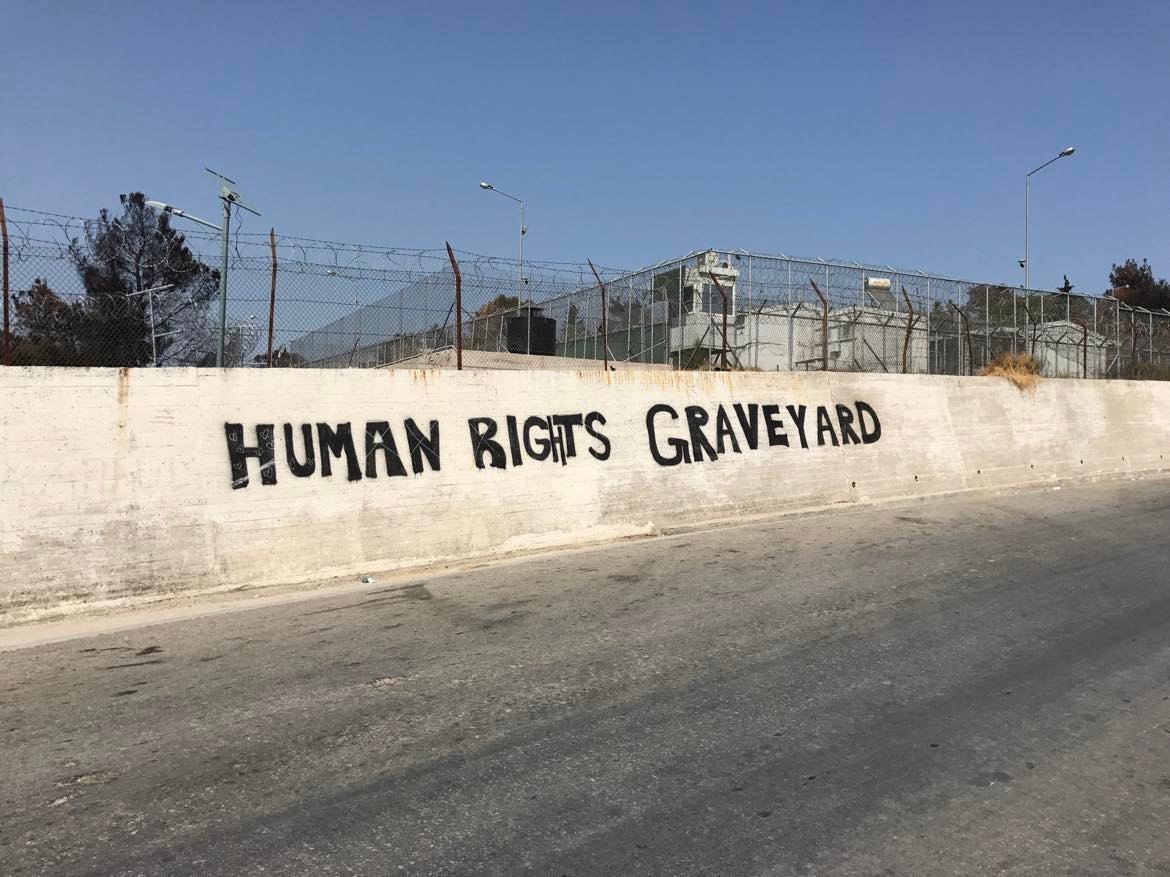What Was Moria and What Comes Next?
A portfolio of reflections and responses solicited and edited by Yannis Hamilakis (Brown University)
The façade of the Moria camp, a few days after the fire. (Photograph by Yannis Hamilakis, October 4, 2020)
Moria was the largest refugee camp in Europe, located on the Greek border island of Lesvos. It occupied a central position in the global media and in popular and academic discussions on migration. The camp was completely destroyed by fire in September 2020. In this portfolio of short responses, we have gathered around the ashes of Moria to take stock of what we know and feel about the place in order to conjure up the thoughts and plan the writings to come. We are archaeologists, social anthropologists, teachers, authors, and activists; some of us are on the move, but all of us have direct experience of the place, a place we will continue carrying with us in our own journeys. Yannis Hamilakis’s essay introduces the context and the rationale of this portfolio, offering at the same time background to Moria and a few first reflections on its role and meanings. Katerina Rozakou takes us back to the summer of 2015, when Moria embodied hope. Parwana Amiri adopts various personae to recount the risks, the threats, and the daily violence that the inhabitants of Moria experienced. Zakria Farzad talks of his efforts to build self-help mutual-aid initiatives. Shahram Khosravi narrates his encounters with people from Afghanistan he met in Moria and makes the connection with people whom he met in Iran, planning the same journey but unaware of the Moria realities. Dionysis Pavlou recounts the impossible struggles to establish an educational program inside the camp. Yannis Hamilakis takes us on a tour among the burnt remnants, reflecting on ruination as a material condition that engenders new knowledge and affect. Penelope Papailias looks at the September 2020 fire as a media event. And finally, Giorgos Tyrikos-Ergas’s fictional piece is an oblique take from the point of view of local society.
Yannis Hamilakis is Joukowsky Family Professor of Archaeology and Professor of Modern Greek Studies at Brown University. He has done extensive work on the politics of the past, on nationalism, and on sensoriality and affectivity. Since April 2016, he has worked on the materiality and archaeological ethnography of contemporary migration, centered on the island of Lesvos. His edited collection The New Nomadic Age: Archaeologies of Forced and Undocumented Migration came out in 2018. His most recent book is Archaeology, Nation, and Race: Confronting the Past, Decolonizing the Future, coauthored with Rafael Greenberg, which will appear in early 2022. The exhibition he cocurated, Transient Matter: Assemblages of Migration in the Mediterranean, is currently on show at the Haffenreffer Museum of Anthropology, Brown University.
By Katerina Rozakou
By Parwana Amiri
By Shahram Khosravi (Stockholm University)
By Dionysis Pavlou
By Penelope Papailias
By George Tyrikos-Ergas








